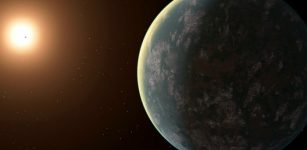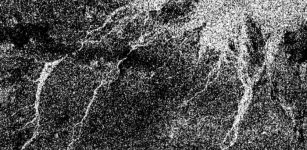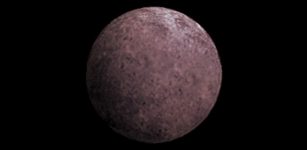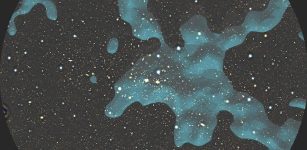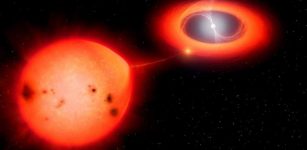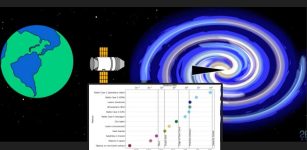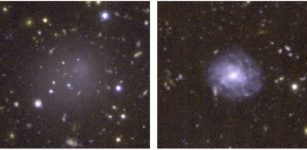New Einstein Cross Discovered – His Prediction Confirmed
Eddie Gonzales Jr. – MessageToEagle.com – A phenomenon predicted by Albert Einstein’s theory of General Relativity, has now been confirmed.
By combining images from the Hubble Space Telescope with spectroscopic observations from the GTC (The Gran Telescopio Canarias), found the evidence of a new example of a gravitational lens.
In his theory of general relativity, Albert Einstein said that the trajectory of light curves in the presence of matter.
A new Einstein cross had been discovered, named J2211-0350 according to its coordinates on the sky. The object acting as a lens turns out to be an elliptical galaxy located at a distance of approximately 7 billion light years. Image credit: IAC
This effect can be observed in the case of light emitted by a distant galaxy, when its light passes close to another galaxy on its way to the observer.
In this case, the observed effect is due to the alteration caused by a galaxy that acts like a magnifying glass amplifying and distorting, in four separate images in the form of a cross, the light of another galaxy located 20,000 million light years away.
The phenomenon is known as gravitational lensing and gravitational lenses act like magnifying glasses that change the size, shape, and intensity of the image of the distant object.
Depending on the degree of alignment of the two sources, multiple images of the distant source can be observed, such as four separate images in the form of a cross (hence the name “Einstein’s cross”), rings, or arcs.
It is difficult to spot a gravitational lens, because the separation between the images produced by the lens is usually very small, requiring high-resolution images to see them.
It is not enough to spot four points of light in the shape of a cross positioned around a galaxy and declare it is a lens.
Astronomers used both Hubble images and spectroscopic observations and were able to confirm Einstein’s prediction.
A new Einstein cross had been discovered, named J2211-0350 according to its coordinates on the sky. The object acting as a lens turns out to be an elliptical galaxy located at a distance of approximately 7 billion light years (z = 0.556), while the source is at least 20 billion light years away (z = 3.03).
“Normally the source is a quasar, it was with great surprise that we realized the source in this case was another galaxy, in fact a galaxy with very intense emission lines which indicates it is a young object still forming large amounts of stars”, explains Daniela Bettoni of the Padova Observatory and Riccardo Scarpa of the IAC, in a press release.
Gravitational lenses allow the study of the Universe in a unique way, because the light of the different images, initially the same light, follows different paths in the Universe and any spectral differences must be due to the material that is between us and the source.
Moreover, if the source is variable we can see a time delay (one image illuminates before the others), which provides valuable information about the shape of the Universe.
Written by Eddie Gonzales Jr. – MessageToEagle.com Staff Writer


